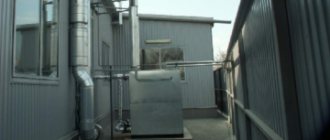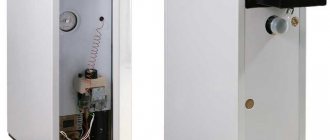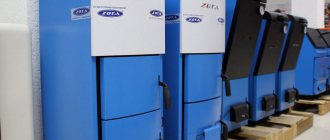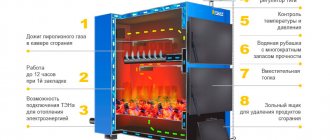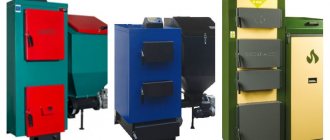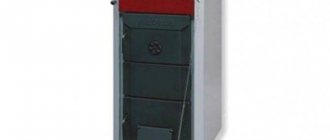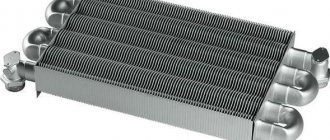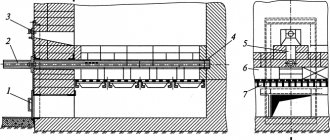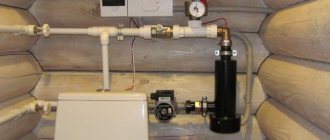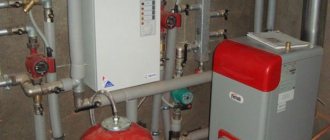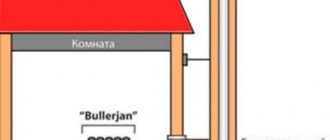Industrial boilers operating on gas fuel are in great demand today due to the high assessment of their efficiency, taking into account the rising cost of various energy sources. Such autonomous heating systems are capable of heating not only large-scale objects with large areas of interior space, but they are also suitable for heating houses with all their outbuildings (baths, garages, barns, poultry houses, etc.). It is worth studying in more detail the general characteristics of such boilers, as well as examples of several models that are considered popular on the market today.
Conditions: centralized main gas
Industrial equipment operates on centralized main gas, which is supplied from central direct gas supply systems in the city or locality. Such installations are most often used in the premises of the following facilities:
- warehouses;
- workshops;
- utility central heating points;
- administrative buildings, offices, buildings;
- indoor training grounds, playgrounds and other wide areas of premises.
Gas fuel is considered the most inexpensive than all others, which is why the equipment is more economical than solid fuel or other installations. The device has a special gas burner that directly supplies gas, and also has a special heat exchanger made of high-quality copper.
The design also includes a pump for supplying water (steam) , a pressure gauge for measuring pressure indicators, a thermometer showing the optimal heating temperature and, most importantly, a tank into which the coolant liquid – water – is supplied. To this it is worth adding a security system, which is now supplied to almost all models of modern industrial gas boilers.
Gas industrial hot water boilers
price from 2.000 Euro
Type of design: Two-pass fire-tube boiler with a dead-end combustion chamber Power, kW: from 93 to 4,150 Temperature, °C: up to 120 Pressure, bar: up to 6 Efficiency, %: up to 92 Fuel: gas, light liquid fuel Coolant: water
price from 2.500 Euro
Type of design: Two-pass fire-tube boiler with a dead-end combustion chamber Power, kW: from 81 to 3.610 Temperature, °C: up to 120 Pressure, bar: up to 6 Efficiency, %: over 95 Fuel: gas, light liquid fuel Coolant: water
price from 4.000 Euro
Type of design: Two-section two-pass fire-tube boiler with a dead-end furnace Power, kW: from 186 to 814 Temperature, °C: up to 120 Pressure, bar: up to 6 Efficiency, %: up to 92 Fuel: gas, light liquid fuel Coolant: water
price from 20.000 Euro
Type of design: Three-pass fire-tube boiler with a pass-through furnace Power, kW: from 1165 to 10.560 Temperature, °C: up to 120 Pressure, bar: up to 5 Efficiency, %: up to 93 Fuel: gas, light and heavy liquid fuel Coolant: water
Type of design: Water tube Power, kW: on request Temperature, °C: up to 120 Pressure, bar: on request Efficiency, %: up to 90 Fuel: flue gases Coolant: water
Industrial hot water boilers are used to provide industrial premises with hot water and heating. The implemented installations make it possible to reduce maintenance costs, including through the use of automation systems that control temperature conditions, pressure indicators and other parameters. Delivery and installation of equipment is possible in the Moscow region and in other cities of the Central Federal District: Tula, Samara, Nizhny Novgorod, Tver and Voronezh.
Types of boilers: hot water, steam pyrolysis
Depending on whether the device will heat a hangar or a small warehouse, two heating supply options are provided - steam or hot water. To heat indoor production areas, hot water boilers are most often used. And the steam pyrolysis option is well suited for residential buildings and small premises. Which of them is more economical and which is more expensive should be calculated individually, based on the parameters of the area, principle and design of each model separately.
Heating boiler Protherm Bizon NO 100
Water heating industrial boiler houses
Gas boiler houses, like boiler houses running on other types of fuel, can be divided according to the type of coolant used. Industrial boiler houses can be steam (use water steam) or hot water (use water with a temperature of up to 115 C). Steam boiler rooms are widely used in the following cases:
- In the construction industry - to prevent freezing of such “inert” substances as sand or gravel, to heat dense media - oil, fuel oil, etc.;
- In public utilities for heating residential buildings and premises;
- In confectionery, canning and other food production for sterilization and preparation of food raw materials and containers for it;
- In woodworking industries;
- In agricultural production.
Hot water industrial boiler houses are also often installed at production facilities, but to heat the production process circuit, supply the premises with heat and hot water, and also to create a favorable climate for crops grown in a greenhouse. The advantage of hot water boiler houses is their ease of manufacture and relatively low cost. In addition, hot water industrial boiler houses can be supplied to production in the form of a finished product - a block-modular boiler house.
Additionally: automatic boiler control, automatic fuel filling
The improvement of gas industrial boilers lies in the fact that they have automatic control, as well as automatic “filling” of fuel.
Automation consists of the following elements:
- Control block;
- elements that control the operation of the boiler - sensors, valves, control with a built-in microprocessor;
- elements safety system - warn of leaks, pressure drops, temperature increases, etc.
Thanks to this system, it is possible to control the supply of energy, shutdown, ignition of the flame, stability, and uniformity of pressure distribution in the system. And other. This also achieves significant savings in gas consumption.
Types of industrial boilers
To heat industrial heating radiators or supply hot water to heat exchangers to heat air, enterprises install medium- and high-power heat generators. Most often, enterprises use the following types of units:
- gas water heating;
- gas steam;
- solid fuel water heating;
- diesel
Note. Diesel heat generators are extremely rare in factories due to the high cost of fuel.
The most common of all are gas industrial boilers that heat water. They are fully automated, have several safety levels and have the highest efficiency - more than 90%. To increase efficiency, these units are equipped with water economizers, which remove heat from the flue gases and increase the efficiency of the installation by another 3-5%. The number of personnel required to service gas boilers is minimal, as is the frequency of maintenance.
Gas steam boilers are not installed specifically for heating; their task is to produce steam of specified parameters for technological needs. But if such a unit is available, then it simultaneously provides the workshop with heat. To do this, steam is passed through a plate or shell-and-tube heat exchanger, where it heats the water supplied to the heating system. A boiler for steam production is more complex than a hot water boiler; the highest requirements are placed on it.
In recent years, solid fuel industrial boilers have become increasingly popular. Despite the relatively low efficiency (depending on the type of unit), these installations are in demand in woodworking, agricultural and other enterprises associated with the availability of inexpensive wood or coal. Heat generators are not as easy to use as gas heaters and require constant supervision by maintenance personnel. Currently, the following industrial solid fuel boilers are used to heat industrial premises:
- burning wood and coal with manual loading;
- coal with automatic fuel supply;
- pellet
For small and medium-sized buildings, units with manual loading can be used. Where there is no possibility or desire to maintain extra personnel, it is customary to install industrial hot water boilers with automatic supply of coal, pellets or wood chips. Although the listed heat generators still need to be cleaned of ash at least once a week.
For reference. Often, high-power solid fuel boilers are loaded using a tractor or forklift.
Advantages and disadvantages
The advantage of using industrial gas boilers in areas such as agriculture, production, administrative or residential buildings is easy installation and long-term operation without major repairs. But there are other advantages, which are as follows:
- The heat transfer coefficient is high , more than the consumption coefficient.
- The coolant in such boilers does not need to be brought to a boil, which eliminates the risk of compromising the integrity of the heating system itself.
- Work on different types of liquid energy without significant losses.
- Fluid movement is straight forward.
- Climate change regulators control the operation of the system.
- A control and measuring set of instruments is included in the boiler package.
- Perfectly mounted in a block-modular boiler system .
- There is protection against scale.
- Compact dimensions.
- Availability on the market.
- There is no need to connect to a power supply, which significantly reduces the cost of using the equipment.
The disadvantages of gas industrial installations are the following indicators:
- They consume fuel quickly and intensively.
- The price on the market is too high. You have to look for cheaper options from a direct supplier.
- Accidental extinguishing of the burner can lead to accidents and gas explosions. You need to choose a model with a built-in self-diagnosis and safety system - for example, thermostats that regulate the intensity of the flame.
TOP – Description with characteristics and prices of three boilers (for an area of 1000 sq.m.)
We will describe the capabilities and main parameters of some industrial-grade gas boilers.
Floor-standing boiler Buderus Logano (2 boilers come in pairs)
- Heat exchanger – cast iron.
- The combustion chamber is closed.
- Power modes – 4 options.
- Control – intelligent, automatic.
- Burner type – atmospheric.
- Ignition - electric.
- Thermal power – 159-296 kW.
- Pressure – 4 Bar.
- Efficiency – 93%.
- Pressure thrust – 3 Pa.
- The chimney diameter is 250-360 mm.
- Manufacturer – Russia.
- Dimensions (LxWxH) – 1264x1420x1610 mm.
- Warranty – 2 years.
- Price – 776,550 – 950,000 rubles.
Gas industrial boiler VAILLANT atmoCraft
- Type of equipment – sectional.
- Installation - on the floor.
- Heat exchanger – cast iron.
- The combustion chamber is open.
- Control – LCD display, intelligent, automatic.
- Burner type – atmospheric.
- Ignition - electric.
- Thermal power – 157 kW.
- Pressure – 4 Bar.
- Heat transfer – 95%.
- Pressure thrust – 3 Pa.
- The chimney diameter is 250-375 mm.
- Dimensions (LxWxH) – 1145x1730x1012 mm.
- Manufacturer – Germany.
- Warranty – 2 years.
- Price – 550,000 – 750,000 rubles.
Industrial gas boiler PROTHERM NO-3500 Bison
- Heat exchanger and housing – steel.
- The combustion chamber is open.
- Association – cascade.
- Power modes.
- Control – intelligent, microprocessor-based.
- Burner type – atmospheric.
- Burners - there may be several variations.
- Different variations of energy carriers.
- Ignition - electric.
- Thermal power – 3500 kW.
- Thermal load – from 10 W.
- Heat transfer – 93-100%.
- Pressure thrust – 3 Pa.
- The chimney diameter is 250-360 mm.
- Dimensions (LxHxW) – 2146x390x1870 mm.
- Manufacturer – Russia.
- Warranty – 3 years.
- Price – 1.9-2.2 million rubles.
In conclusion, I would like to note that the selection of the optimal boiler model should be carried out with accurate calculations, and not approximate ones. Only in this case is its high level of functionality possible. A special formula is used for calculations: 1 kW (heating) per 10 sq. m. premises with excellent thermal insulation and a ceiling height of no more than 3 m. The boiler may have 1-2 circuits. You should also pay attention to the dimensions, weight and equipment of the equipment with all the necessary measuring instruments.
Fuel calculation per 1000 sq.m.
In order to correctly calculate what power a boiler should be installed to service an enterprise, you should take into account the general heat loss indicators, which are accepted as the standard. It is very important that the building itself is well insulated. For example, we can consider a room with a volume of 5500 cubic meters. and an area of 1000 sq.m. In such a space, the heat loss will be as follows:
15.3 kW will go through the roof;
- 7.4 kW – walls;
- 5.2 kW – windows;
- 10.8 kW – floor;
- 0.5 kW – door.
Using calculators, you can achieve quite serious calculation results suitable for use in the design of heating systems for a specific facility. Let's look at an example in a special table of how to calculate per 1000 sq.m. area consumption of one or another fuel. The input data for the calculator will be as follows (warehouse):
- The area of space for heating is 1000 sq.m.
- Ceiling height – 3 m.
- Thermal insulation – 100%.
- The desired optimal temperature inside (on average) is 22˚C.
- The duration of the season is 180 days.
- The minimum required boiler power is 68.39 kW.
- The boiler power that a specialist would recommend is 70-75 kW.
| Energy resource type | Flow volume | price, rub. | Total costs for a season of 180 days, rub. | ||
| Qty | Unit change | Sum | Unit change | ||
| Firewood (oak) | 89,20 | cubic meters | 1100 | cubic meters | 98 120 |
| Pellets (briquettes or granules from compressed shavings) | 31,72 | T | 4840 | 1 t | 153 524 |
| Natural gas (for legal entities) | 15858,37 | cubic meters | 20,9 | cubic meters | 331 440 |
| Natural gas (for housing and communal services, heating of the population) | 15858,37 | cubic meters | 15,4 | cubic meters | 244 220 |
| Diesel fuel | 10,21 | l/h | 10,03 | 1 l | 235 598 |
| 32000 | l/year | ||||
| Coal (brown) | 32 | t/year | 3,5-6 | 1 kg | 176 000 – 192 000 |
| 5500-6000 | 1 t | ||||
| Electricity (for legal entities) | 114180,23 | kW-hh | 3,3 | kW-hh | 376 795 |
| Electricity (for housing and communal services) | 114180,23 | kW-hh | 1,1 | kW-hh | 125 598 |
